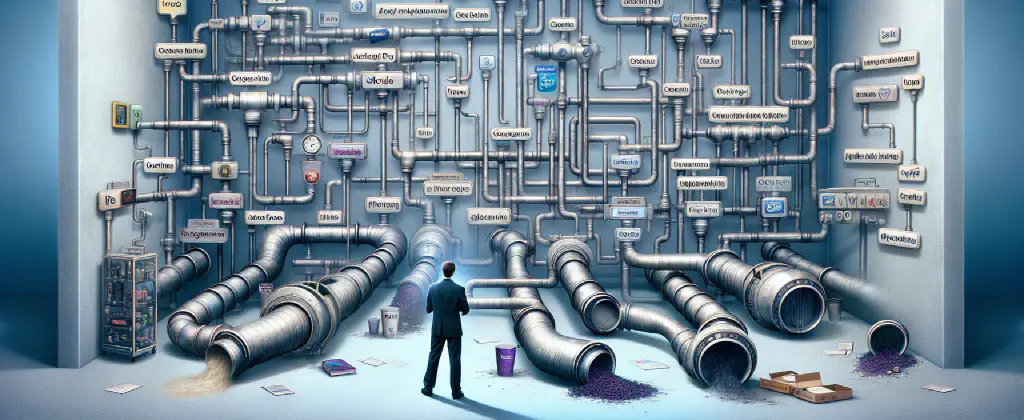15. December 2023
Realizing the Dream of Visual Programming: The Legacy of Yahoo Pipes

Yahoo Pipes: a name that brings back memories for many developers. This pioneering visual programming environment, launched in 2007, offered a simple and intuitive way to create data mashups and automate workflows. With its drag-and-drop interface, users could connect various online services, manipulate and transform data, and create custom pipelines - all without writing a single line of code. The possibilities seemed endless, and the impact of Yahoo Pipes transcended its time.
The Power of Visual Programming
Visual programming environments like Yahoo Pipes allowed developers to bring together disparate data sources and create unique integrations. One user shared how they used Yahoo Pipes to combine and deduplicate JIRA projects and GitHub commit streams into a single RSS feed, providing a streamlined way to track changes and notifications. Another user mentioned building a Spotify-like app client-side, utilizing Yahoo Pipes to search, stream, and fetch metadata from multiple sources. The convenience and flexibility provided by Yahoo Pipes were unrivaled at the time.
The Nostalgia of an Open Web
Yahoo Pipes represented an era of the “open web,” where developers could freely mash up services, experiment with data, and create innovative applications. As one user expressed, the current landscape of API keys and restricted access feels like a departure from those exciting times. The concept of an unrestricted web, where micropayments and user-paid services were the norm, remains a dream yet to be fully realized.
Evolutions and Alternatives
While Yahoo Pipes may no longer be active, its spirit lives on in various forms. Developers have built upon the foundations laid by Yahoo Pipes to create powerful tools that enable visual programming and workflow automation. One such example is Node-RED, which offers similar functionality to Yahoo Pipes and boasts a user-friendly interface built with jQuery. Another tool, Pipedream, provides an intuitive visual programming experience for automation tasks. Users have praised its capabilities for replacing Docker containers and automating workflows effectively.
Eager to explore further, developers have also created open-source alternatives inspired by Yahoo Pipes. Projects like Flow Based Programming and Windmill offer self-hostable options that empower users to create powerful data pipelines.
Looking Ahead
As the legacy of Yahoo Pipes continues, the world of visual programming and workflow automation evolves. The desire for an open web, where developers can freely integrate services and create without restrictions, remains strong. New tools and platforms emerge, pushing the boundaries of what is possible with visual programming.
While Yahoo Pipes may be seen as a bygone era, its impact is undeniable. The nostalgia for the open web, the memories of innovative mashups, and the continuous evolution of visual programming - all carry the spirit of Yahoo Pipes forward. As technology progresses, developers will continue to dream, experiment, and build upon the foundations laid by Yahoo Pipes, ushering in the next generation of visual programming tools and the realization of an open and unrestricted web.
Source: https://retool.com/pipes